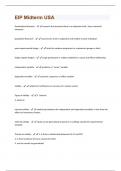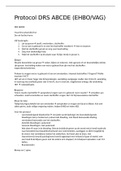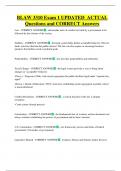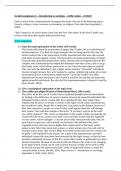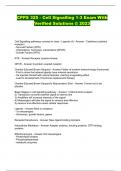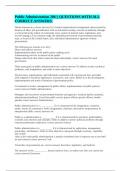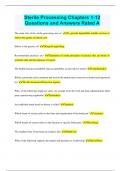Exam (elaborations)
DHG 161 Final Exam Latest 2025 Update with complete solution.
- Course
- Institution
What is the usual dosage and time sequence of prophylactic premedications? - ️️30-60 min before procedure Standard Amoxicillin - adult: 2 g orally - child: 50 mg/kg orally Unable to take oral medications Ampicillin - adult: 2 g IM or IV - child: 50 mg/kg IM or IV Cefazolin or celtriax...
[Show more]




